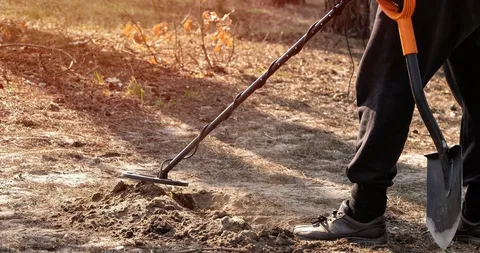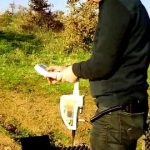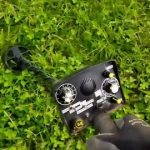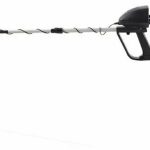Gold pan, an essential tool for any aspiring gold miner, has been used for centuries to uncover hidden treasures. In this beginner’s guide, we will explore the art of gold panning and learn the techniques and tips to successfully find gold in rivers and streams. Whether you are a seasoned prospector or a complete novice, this guide will provide you with the knowledge and skills to uncover hidden treasures with a gold pan. Join us as we embark on an exciting journey to discover the world of gold prospecting.
“Uncover Hidden Treasures with a Gold Pan: A Beginner’s Guide” is a comprehensive book that provides detailed instructions and tips for using a gold pan to search for valuable treasures. It covers the basics of gold panning, including techniques, equipment, and locations to search. The book also offers advice on how to identify potential treasure hotspots and how to properly extract and handle any valuable materials that are found. With this guide, beginners can gain the knowledge and confidence they need to start their own treasure hunting adventures with a gold pan.
The Essential Guide to Gold Panning Techniques

The Essential Guide to Gold Panning Techniques is a comprehensive resource for anyone interested in the art of gold panning. This book covers everything from the basics of gold panning to advanced techniques for maximizing your chances of finding gold. It includes detailed instructions on how to use equipment, identify potential gold-bearing areas, and extract gold from the water and sediment. Whether you’re a beginner or experienced gold panner, this guide is essential for improving your skills and increasing your success in finding gold.
Top 10 Tips for Successful Gold Panning

1. Research the area where you plan to pan for gold in advance to ensure that it is a known gold-bearing region.
2. Invest in quality equipment such as a gold pan, classifier (sifter), shovel, and snuffer bottle to maximize your chances of finding gold.
3. Learn how to properly use your equipment, including techniques for effectively panning for gold and identifying potential gold deposits.
4. Choose the right location within a river or stream to start panning, such as areas with slow-moving water or gravel bars.
5. Follow the “half-full” rule when panning, keeping your pan only half-full of material to make it easier to separate the heavier gold from the lighter sediment.
6. Use a classifier to sift out larger rocks and debris before panning to make the process more efficient.
7. Practice patience and take your time when panning, as rushing can cause you to miss smaller gold particles.
8. Be mindful of environmental impacts and always follow the rules and regulations for gold panning in the area you are exploring.
9. Keep a keen eye for potential gold deposits, such as black sand, which often accompanies gold in rivers and streams.
10. Always stay positive and persistent, as gold panning can be a challenging but rewarding hobby with the potential for finding valuable treasure.
History and Evolution of the Gold Pan

The gold pan has been used for thousands of years to separate gold from sediment. The earliest known use of the gold pan was in ancient Egypt around 4,000 years ago. The design of the gold pan has evolved over time, with early versions being made of wood or metal and more modern versions being made of plastic.
The basic design of the gold pan has remained relatively unchanged, with a wide base and sloping sides to allow for the easy separation of gold from sediment. However, modern gold pans often feature riffles or ridges on the inside to help capture smaller gold particles.
The gold pan played a significant role in the California Gold Rush of the 1840s and 1850s, where it was used by prospectors to sift through sediment in search of gold. Today, the gold pan is still used by small-scale miners and hobbyists to search for gold in rivers and streams.
In recent years, new technologies such as metal detectors and high-tech dredging equipment have emerged, but the humble gold pan remains a popular and effective tool for those seeking their fortune in gold.
Choosing the Best Gold Pan for Your Adventures
See also: gold prospecting tools

Choosing the best gold pan for your adventures depends on a few factors, including where you plan to prospect, the size of gold you’re hoping to find, and your personal preferences. For beginners, a standard, 14-inch plastic pan is a good option. More experienced prospectors might prefer a larger, steel pan for better durability. Additionally, consider the shape of the pan – a riffled design can help trap gold more effectively. It’s also important to consider the weight and size of the pan for portability and ease of use. Ultimately, the best gold pan for you will be one that feels comfortable to use and suits the specific conditions of your prospecting area.
Gold Panning: A Fun and Rewarding Hobby for All Ages
Gold panning is the act of sifting through sediment in water to find small flakes or nuggets of gold. It is a popular hobby for people of all ages, as it can be done in a variety of settings such as rivers, streams, and creeks. The process of gold panning requires a pan, water, and a keen eye for spotting the glittering metal. It is a fun and rewarding hobby as it allows individuals to connect with nature and potentially find valuable treasures. Additionally, it can be a great way to spend time with friends and family, as well as enjoy the outdoors. Overall, gold panning is a hobby that can be both exciting and fulfilling for those who are willing to try it out.
Exploring the Best Locations for Gold Panning
Gold panning is a popular recreational activity for those looking to discover the thrill of finding precious gold nuggets. Some of the best locations for gold panning include the American River in California, the Fairbanks area in Alaska, the Black Hills of South Dakota, and the Fraser River in British Columbia. These areas are known for their rich history of gold mining and are favored by both experienced and novice gold panners. Additionally, there are many organized tours and events that cater to gold panning enthusiasts, providing a unique and exciting experience for anyone looking to try their hand at this classic prospecting activity.
Common Mistakes to Avoid When Gold Panning
– Not researching the area: Failing to research the location and understanding the geology of the area can lead to wasted time and effort. It’s important to know where to find gold in a specific area and the type of gold deposits that are common.
– Using the wrong equipment: Using the wrong tools or equipment can greatly reduce your chances of finding gold. It’s essential to have the proper gear, including a gold pan, shovel, and classifier, to effectively extract gold from a stream or river.
– Lack of patience: Gold panning requires a great deal of patience and persistence. Many beginners make the mistake of giving up too soon when they don’t find gold right away. It’s essential to spend ample time and effort to collect and pan through a significant amount of material.
– Ignoring safety precautions: When gold panning, it’s important to prioritize safety. This includes being mindful of slippery rocks and potential hazards in the water, as well as being aware of potential wildlife encounters.
– Disregarding environmental regulations: Gold panners should be aware of any regulations or restrictions in the area and adhere to them. Failure to do so can result in fines or other legal consequences. It’s essential to respect the environment and leave the area as you found it.
The Science Behind Gold Panning: How It Works
Gold panning is a method used to separate gold from other sediments and materials in river beds and streams. The process relies on the density of gold, which is much higher than the density of other materials commonly found in river beds.
When gold panning, individuals use a shallow pan filled with water and sediment from the river. By repeatedly agitating the pan and allowing the water to carry away the lighter materials, such as sand and gravel, the heavier gold particles are left behind in the bottom of the pan.
This process works because gold is around 19 times denser than water and about 3 times denser than the average material found in a stream bed. This means that when the pan is agitated, the water helps to carry away the lighter materials while the gold particles sink to the bottom due to their higher density.
Gold panning requires patience and skill, as it is important to carefully separate the gold from the other materials. With practice, individuals can become proficient at this method of finding gold in natural waterways.
Gold Panning Equipment: Must-Have Tools for Beginners
Gold panning equipment for beginners typically includes a gold pan, a classifier, a snuffer bottle, a shovel, and a pair of tweezers. The gold pan is used to separate gold from other materials, while the classifier helps to remove larger rocks and debris. The snuffer bottle is useful for collecting smaller gold flakes, while the shovel is used for digging and moving material. Tweezers come in handy for picking out small pieces of gold from the pan. Additional equipment, such as a sluice box or a gold prospecting kit, may also be helpful for more serious gold panning enthusiasts.
Gold Panning: Preserving the Environment While Prospecting
Gold panning, also known as placer mining, is the process of using a pan to separate gold particles from sediment in a stream or river. It is a popular recreational activity and hobby for many people, but it is important to be mindful of the environmental impact of gold panning.
To preserve the environment while prospecting for gold, it is essential to follow environmental regulations and guidelines set by local authorities. These regulations are in place to protect the natural habitats and prevent any harm to the ecosystem.
Additionally, it is crucial to use proper equipment and techniques to minimize any disruption to the environment. This includes using non-toxic and biodegradable materials, such as environmentally-friendly soaps for cleaning equipment, and avoiding the use of harmful chemicals.
Furthermore, it is important to practice responsible prospecting by filling in any holes or pits created during the gold panning process and leaving the area in its natural state. This helps to minimize the impact on the surrounding landscape and wildlife.
Overall, by being mindful of the environmental impact and following responsible practices, gold panning enthusiasts can enjoy their hobby while preserving the natural environment for future generations.












